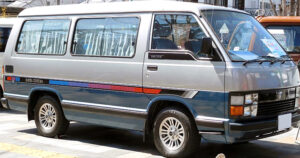Mastering Auction Grades at Japanese Auto Auctions
Have you ever looked around for cars at a Japanese auto auction and been puzzled when looking at the auction sheets? You’re not alone. For many first-time buyers, especially those unfamiliar with Japanese, figuring out auction grades can seem intimidating. But worry not! We’re here to guide you through the process and help you understand auction grades with ease.
Why Are Auction Grades Important?
Auction grades are the cornerstone of Japan’s trusted auto auction system. They provide a comprehensive snapshot of a vehicle’s condition, making it easier for buyers to evaluate options quickly. Whether you’re seeking a reliable everyday car or a collector’s dream vehicle, understanding these grades is crucial for making an informed decision.
Decoding the Auction Sheet
Each auction sheet is packed with essential information about the car’s condition. Here’s how to break it down:
Sales Point (セールスポイント)
This section highlights what makes the vehicle stand out. You’ll find attractive features like leather upholstery, a premium sound system, or advanced navigation tools. Think of it as the car’s “bragging rights.”
Notice Section (注意事項)
Here, inspectors list both the pros and cons of the car. Expect details about extras like seat heaters or drawbacks like engine noise. It’s a balanced overview of what the car offers.
Inspector Report (検査員報告)
The inspector’s report provides a detailed assessment of the car’s interior and exterior. It covers everything from scratches and dents to significant deformations or repairs. This section also mentions oil leaks, repainting, and other mechanical issues.
Mileage (走行)
Mileage is critical when assessing a car’s value. Auction sheets feature accurate odometer readings and flag any mismatches with the vehicle’s official registration documents. Majority of the cars you find will be in km instead of miles.
To understand more about converting KHM to MPH, check out this article explaining which countries uses which metric and how to convert it.
Vehicle Identification Number (VIN) or Chassis Number (車台 No.)
In Japan, a car’s age is calculated from its first registration date rather than its manufacture date. Knowing this detail can help you comply with age restrictions in certain countries.

Understanding Auction Grades
Auction grades simplify the buying process by offering a quick overview of a car’s condition. Here’s a closer look at the grading scale:
- Grade 6 or S: Brand-new or demo vehicles with minimal mileage.
- Grade 5: Nearly new cars in pristine condition.
- Grade 4.5: Lightly used vehicles with negligible wear.
- Grade 4: Cars in good condition with minor imperfections.
- Grade 3.5: Well-maintained cars showing some wear and tear.
- Grade 3: Vehicles with noticeable flaws or potential light damage.
- Grade 2: Poor-condition cars, often with accident histories.
- Grade R or RA: Repaired or heavily modified vehicles.
Tips for Reading Auction Grades Like a Pro
- Familiarize Yourself with the Scale: Each auction house might have slight variations, so it’s essential to know the specifics.
- Pay Attention to Inspector Notes: Details about repairs, repainting, or unusual wear can provide valuable insights.
- Check the Mileage: Combine mileage with the auction grade to assess wear and tear.
- Look for Red Flags: Grades R or RA can indicate significant repairs or heavy modifications—always check their quality.
Discover Rare Finds with Exclusive Services
Looking for a specific car model or a unique collector’s item? Our exclusive Toyota Tsusho Auction and Ninja Auction services give you direct access to Japan’s premium auto auctions. These platforms are perfect for sourcing rare cars, classics, and highly demanded vehicles.
Toyota Tsusho Auction
Toyota Tsusho Auction offers a distinctive auction sheet system tailored for precision and transparency. Dive into the details with our step-by-step guide:
Note: This service is not available for all countries.
Ninja Auction
Ninja Auction simplifies your access to exclusive Japanese auto auctions. It’s your gateway to premium vehicles without the hassle. Learn more about this seamless service: Ninja Auction: How It Works.
Your Next Step: Start Bidding!
Now that you know how to read auction grades, you’re ready to navigate Japanese auto auctions confidently. To know what kind of cars you can find on these auto auctions, check our this article here on JDM Cars You Would Want to Buy from Japanese Auctions. Use our advanced tools to find your dream car, whether it’s a classic collector’s item or a dependable daily driver.
If you have any questions or need expert assistance, contact us at Carused.jp today. We’re here to help you every step of the way!
Last updated: December 16th, 2024 for relevancy and accuracy.



